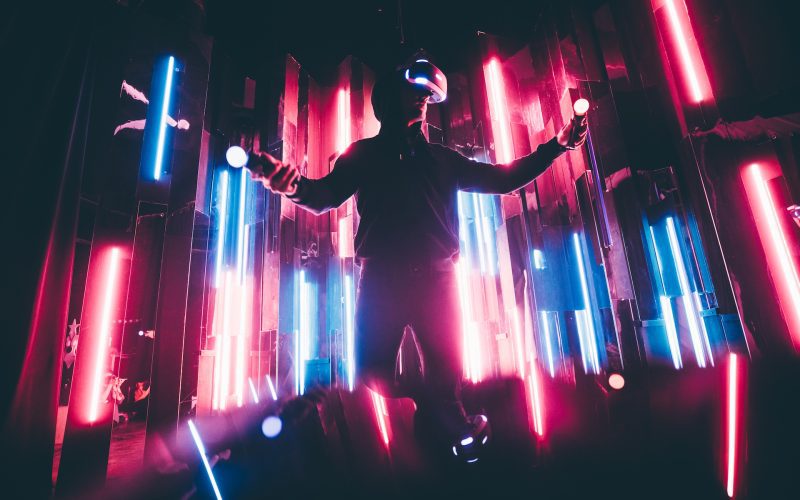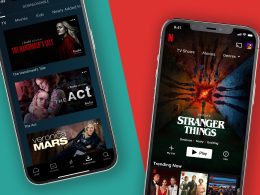Introduction
Augmented Reality (AR) has emerged as a transformative technology across various industries, and the world of live performances is no exception. By superimposing digital information onto the real world, AR offers a unique way to enhance the audience’s experience, providing an immersive and interactive layer to traditional performances. This article delves into the myriad ways AR is revolutionizing live performances, offering a comprehensive look at its applications, benefits, and future potential.
Understanding Augmented Reality
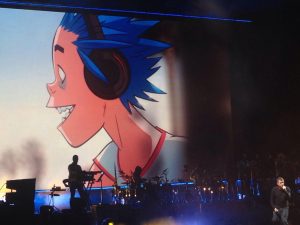
Before exploring its impact on live performances, it’s essential to understand what Augmented Reality entails. Unlike Virtual Reality (VR), which creates an entirely new digital environment, AR overlays digital elements onto the real world. This is typically achieved through devices like smartphones, tablets, AR glasses, and specialized headsets. The result is a seamless blend of the physical and digital worlds, offering users an enhanced perception of their surroundings.
The Evolution of Live Performances

Live performances have always been a dynamic form of entertainment, constantly evolving with technological advancements. From the introduction of electric lighting in theaters to the use of holograms in concerts, technology has continually reshaped how performances are produced and experienced. AR is the latest frontier in this ongoing evolution, offering unprecedented possibilities for artists and audiences alike.
Applications of AR in Live Performances
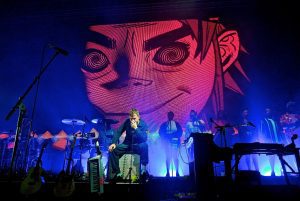
-
Concerts and Music Festivals
AR has found a natural home in the world of music. Concerts and music festivals are increasingly incorporating AR to create visually stunning experiences. Artists can use AR to project digital visuals that sync with their music, offering an immersive experience that goes beyond traditional stage effects.
For instance, AR can be used to display lyrics, animations, or even interactive elements that the audience can engage with through their smartphones. This not only enhances the visual appeal of the performance but also creates a more interactive and engaging experience for the audience.
-
Theater and Opera
Theater and opera productions are also leveraging AR to enhance storytelling and stage design. With AR, directors can create intricate and dynamic sets without the need for physical props. Digital backdrops can change in real-time, allowing for seamless transitions between scenes.
Moreover, AR can be used to provide additional context or information to the audience. For example, historical plays can use AR to display relevant historical facts or background information, enriching the audience’s understanding of the performance.
-
Dance Performances
In dance performances, AR can be used to create stunning visual effects that complement the dancers’ movements. Choreographers can design digital elements that interact with the dancers in real-time, creating a harmonious blend of physical and digital artistry.
AR can also be used for educational purposes in dance. For instance, dance schools can use AR to provide real-time feedback to students, helping them improve their techniques and performances.
-
Sports Events
Sports events are another area where AR is making a significant impact. AR can be used to enhance the viewing experience by overlaying real-time statistics, player information, and other relevant data onto the live action. This provides fans with a richer understanding of the game and keeps them engaged throughout the event.
Moreover, AR can be used to create interactive fan experiences. For example, fans can use AR apps to see 3D replays of key moments, participate in virtual meet-and-greets with players, or even play AR-based games related to the sport.
Benefits of AR in Live Performances
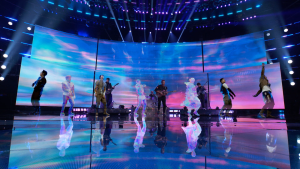
-
Enhanced Audience Engagement
One of the primary benefits of AR in live performances is enhanced audience engagement. By adding an interactive layer to the performance, AR keeps the audience more involved and attentive. This not only makes the experience more enjoyable but also encourages repeat attendance and word-of-mouth promotion.
-
Creative Freedom for Artists
AR offers artists unprecedented creative freedom. With the ability to create and manipulate digital elements in real-time, artists can experiment with new forms of expression and storytelling. This opens up a world of possibilities for innovation and creativity in live performances.
-
Cost-Effective Production
While the initial investment in AR technology can be significant, it can ultimately lead to cost savings in production. Digital sets and props can be reused and modified with ease, reducing the need for physical materials and labor. This makes it easier for smaller productions to achieve high-quality results without breaking the bank.
-
Accessibility and Inclusivity
AR can also make live performances more accessible and inclusive. For example, AR subtitles can be provided for audience members who are deaf or hard of hearing. Similarly, AR can be used to provide translations for non-native speakers, making performances more accessible to a global audience.
Challenges and Considerations

While the benefits of AR in live performances are substantial, there are also challenges and considerations to keep in mind.
-
Technical Limitations
The technology behind AR is still evolving, and there are technical limitations to consider. For example, the quality of AR experiences can vary depending on the device being used. Ensuring a consistent and high-quality experience for all audience members can be challenging.
-
Cost and Accessibility
While AR can be cost-effective in the long run, the initial investment can be prohibitive for some productions. Additionally, not all audience members may have access to the necessary devices to fully experience AR-enhanced performances. This can create a digital divide and limit the reach of AR experiences.
-
Privacy and Security
As with any digital technology, privacy and security are important considerations. AR applications often require access to personal data and device sensors, raising concerns about data privacy and security. Ensuring that AR experiences are secure and respectful of user privacy is crucial.
The Future of AR in Live Performances

The future of AR in live performances looks promising. As the technology continues to advance, we can expect to see even more innovative and immersive applications. Here are some potential future developments:
-
More Interactive Experiences
As AR technology becomes more sophisticated, we can expect to see even more interactive and personalized experiences. For example, AR could be used to create personalized visual effects based on the audience member’s preferences or interactions.
-
Integration with Other Technologies
AR is likely to be integrated with other emerging technologies, such as Artificial Intelligence (AI) and the Internet of Things (IoT). This could lead to even more dynamic and responsive performances, where digital elements can adapt in real-time based on various factors.
-
Wider Adoption
As the cost of AR technology decreases and accessibility improves, we can expect to see wider adoption across various forms of live performances. This will not only enhance the audience experience but also drive innovation and creativity in the industry.
Conclusion
Augmented Reality is undoubtedly enhancing live performances in numerous ways. From creating visually stunning concerts to providing real-time feedback in dance performances, AR is transforming the way we experience live entertainment. While there are challenges to overcome, the potential benefits of AR in live performances are immense. As the technology continues to evolve, we can look forward to even more exciting and immersive experiences in the world of live performances.






